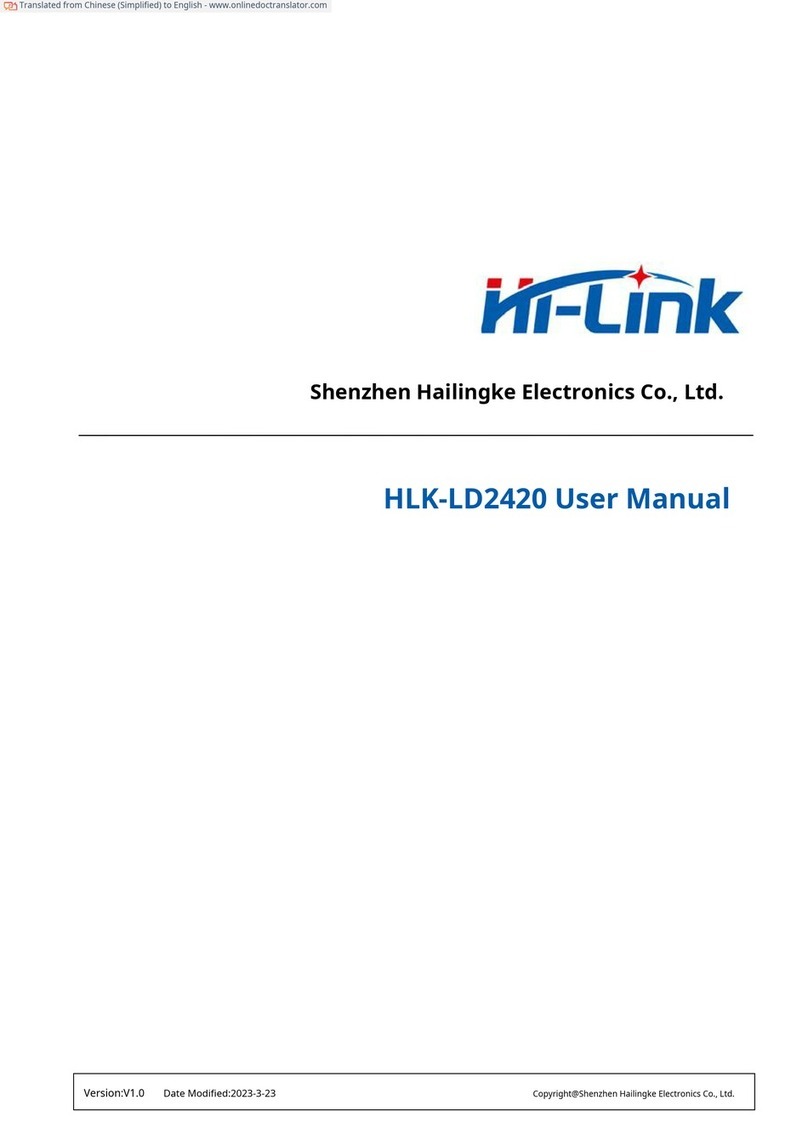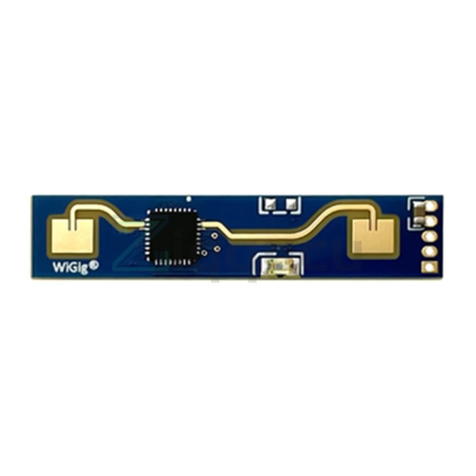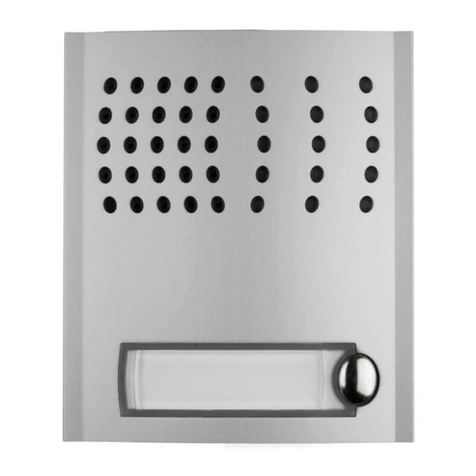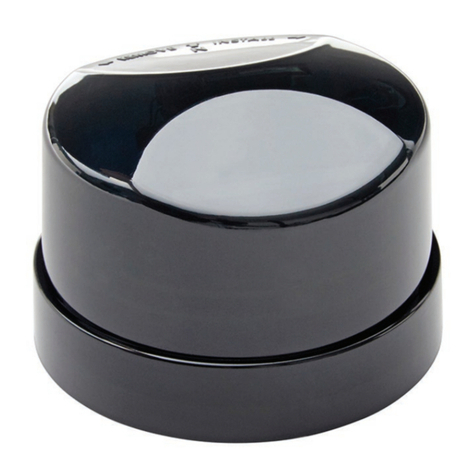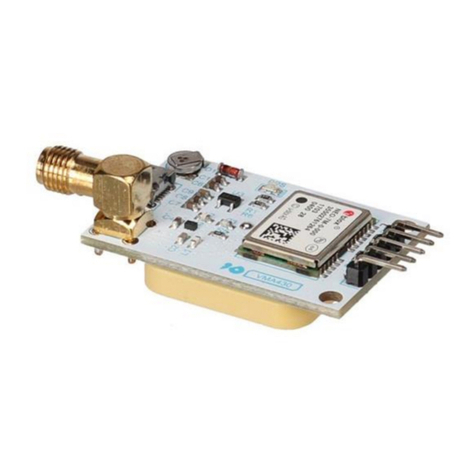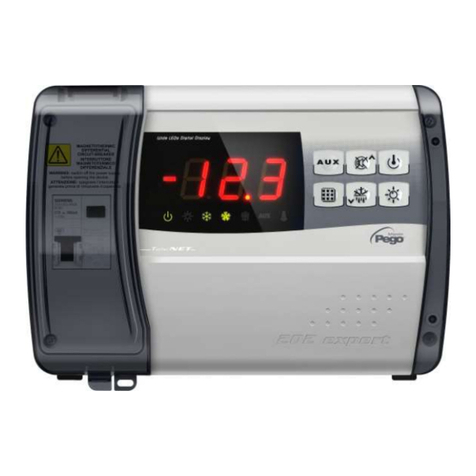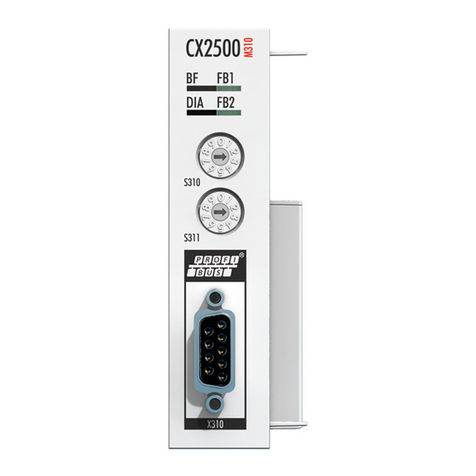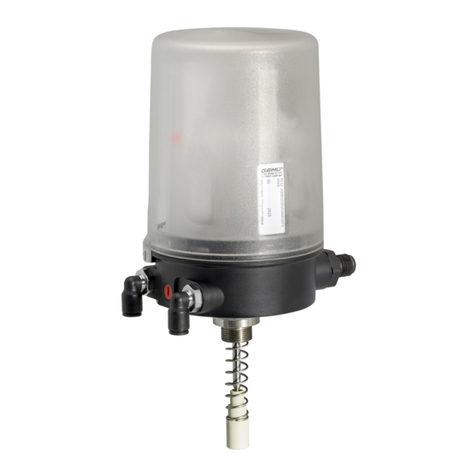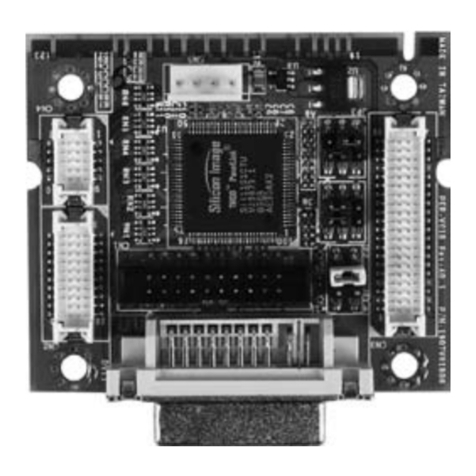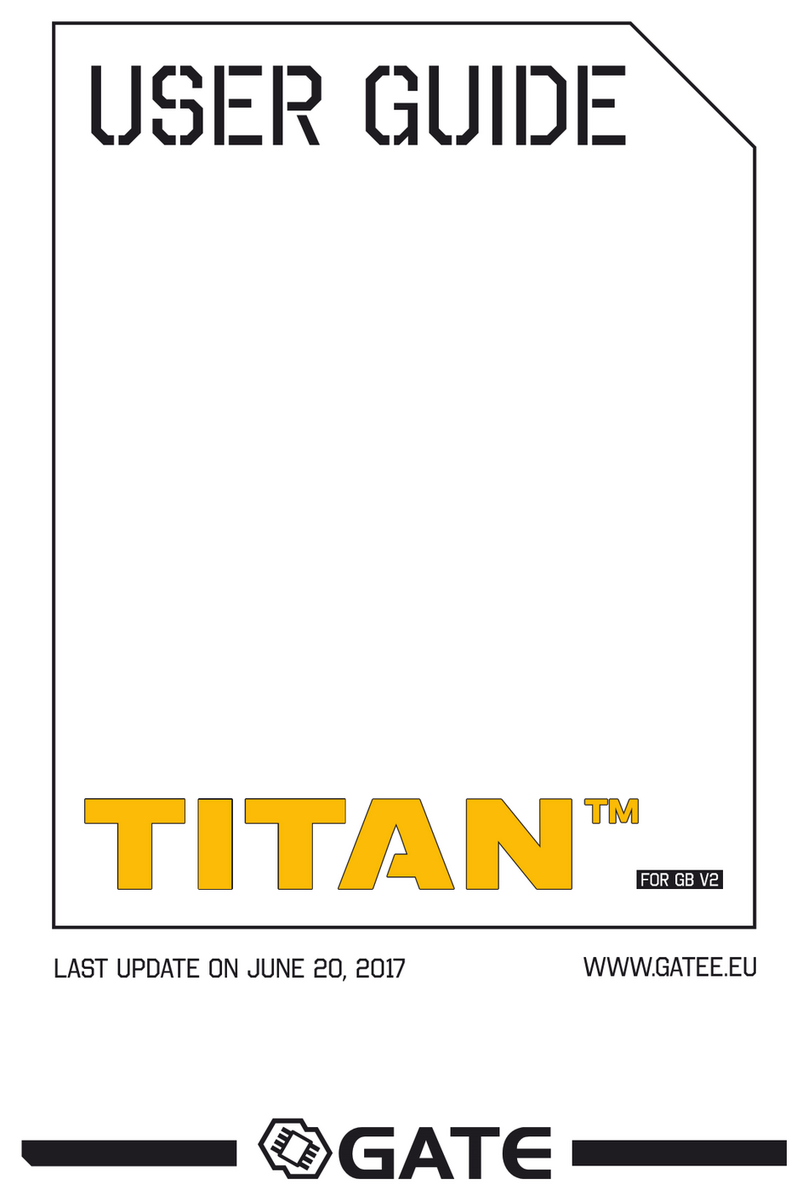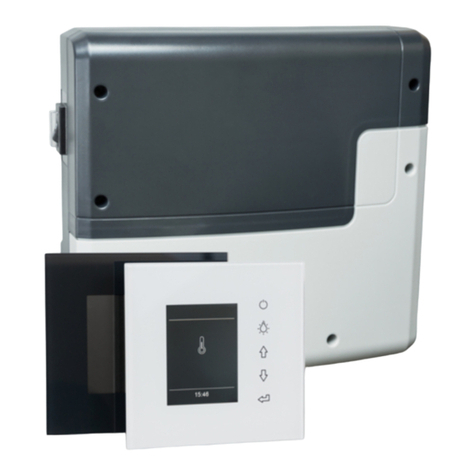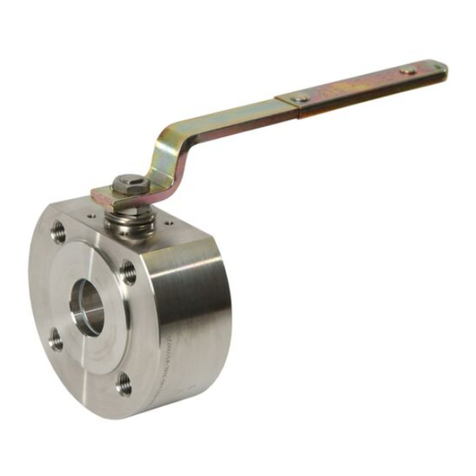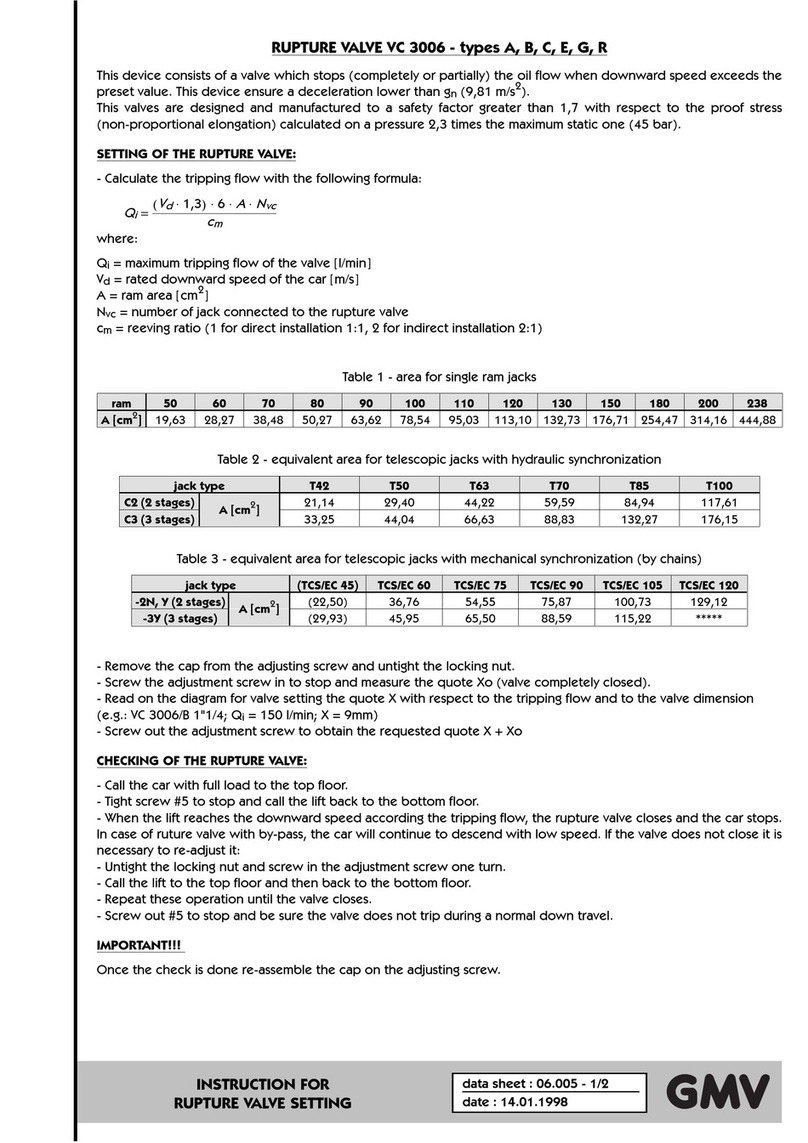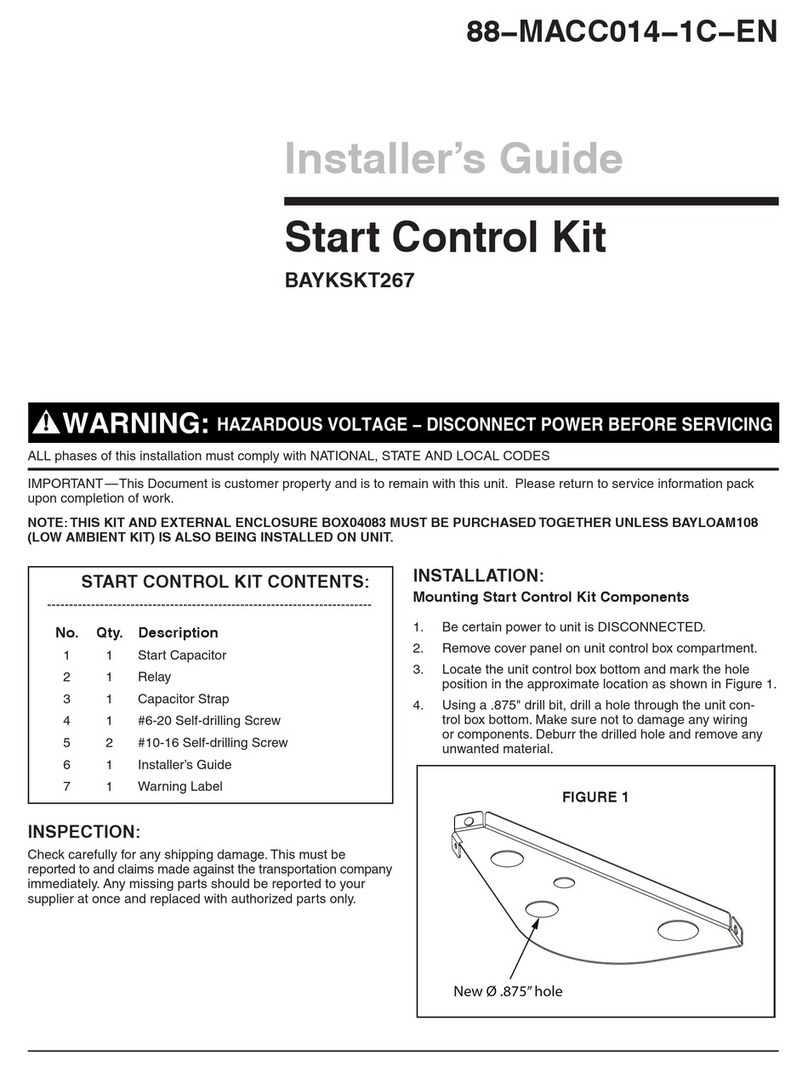Hi-Link HLK-B10 User manual

Shenzhen Hi-link Electronic co.,ltd
HLK-B10
Serial port -Bluetooth Transmission Module
User manual
Version:V1.0 Revise Date:2019-8-12 Rights reserved@ShenZhen Hi-link Electronic co.,Ltd

CONTENT
1. BRIEF INTRODUCTION...................................................................................................... 3
2. PIN DEFINITION.................................................................................................................. 4
3. TYPICAL APPLICATION CIRCUIT.................................................................................... 6
4. BASIC FUNCTIONAL DESCRIPTION............................................................................... 6
4.1.TWO WORKING STATES OF THE MODULE.......................................................... 6
4.2.FUNCTION KEYS AND STATUS INDICATORS..................................................... 7
4.2.1.STATE OUTPUT PIN......................................................................................7
4.2.2. FUNCTION KEY INPUT PIN........................................................................7
4.3. SWITCHING BETWEEN TRANSMISSION AND AT COMMAND MODE........... 8
4.3.1.SWITCH FROM TRANSMISSION TO AT INSTRUCTION MODE.............. 8
4.3.2.FROM AT INSTRUCTION MODE TO TRANSMISSION MODE................. 8
5. AT COMMAND..................................................................................................................... 9
5.1.AT COMMAND FORMAT ........................................................................................ 9
5.2.AT COMMAND LIST AND FUNCTIONAL DESCRIPTION..................................10
6. BLUETOOTH CONNECTION METHOD..........................................................................11
7. TEST TOOLS AND METHODS..........................................................................................12
7.1.TEST BOARD.............................................................................................................12
7.2.TRANSMISSION TEST METHOD........................................................................... 13
7.3.DATA TRANSMISSION TEST BETWEEN SERIAL PORT AND MOBILE APP........13
8. REVISED RECORD.............................................................................................................. 16
9. TECHNICAL SUPPORT AND CONTACT INFORMATION................................................ 16

USER MANUAL
Page 3/ 16
页
HLK-B10
1. Brief Introduction
HLK-B10 is a single-mode BLE5.0 Bluetooth transmission module developed by
Hi-Link Electronics. It integrates Bluetooth radio frequency chip and a small number of
peripheral devices, embedded in 32-bit MCU,500KB flash memory with low power
consumption, 64KB SRAM and rich peripheral resources.
Meet to Bluetooth 5.0 specification, it can be used as Bluetooth slave device and
connected by various Bluetooth host devices.
The module's serial port Bluetooth two-way transmission function is very Simple to use.
Users do not need to understand the complex Bluetooth protocol stack, just connect the
customer's equipment or MCU's serial port to the module, and the module will
automatically complete the two-way data transmission between the serial port and
Bluetooth, which just like a bridge between the user's MCU serial port and Bluetooth
equipment, so that users can quickly and simply use the serial port equipment to realize
Bluetooth wireless transmission function.
Support AT command mode, the user can query or set the basic parameters of the module
through serial port AT command, such as device name, serial port baud rate and so on.
We develop and provide a wealth of testing tools and using documents, and provide
testing APP Demo to facilitate users to quickly start and apply this module. Our company
can also provide flexible and rich custom development services according to the specific
needs of customers.

USER MANUAL
Page 4/ 16
页
HLK-B10
2. Pin Definition
Pin
Symbol
IO type
Function
1
RST
AO
Module reset input pin,Low level efficiency
2
P07
I/O
GPIO7
3
P31
I/O
ADC/CH1
4
P10
I/O
PWM[0](20mA)
5
P11
I/O
Keystroke input pin,Low level efficiency
6
P12
I/O
PWM[2]
7
P13
I/O
PWM[3]
8
3.3V
P
Module power supply 3.3V
9
P32
ADC
Ch2
10
P34
ADC
Ch4
11
P30
ADC
Ch0
12
P33
ADC
Ch3
13
P14
I/O
PWM[4]
14
P15
I/O
PWM[5]

USER MANUAL
Page 5/ 16
页
HLK-B10
Pin
Symbol
IO type
Function
15
GND
P
Power reference place
16
P02
I/O
State indicate LED output,Low level efficiency
17
P03
I/O
GPIO3
18
P04
I/O
GPIO4
19
P05
I/O
GPIO5
20
P06
I/O
GPIO6
21
RXD
I/O
UART input
22
TXD
I/O
UART output
Illustration:
P represents power pin,
I/O represents an input / output pin,
AO represents an analog input and output pin.
3. Typical Application Circuit

USER MANUAL
Page 6/ 16
页
HLK-B10
4. Basic Functional Description
4.1. Two working states of the module
HLK-B10 module has two working states: transmission mode and AT command mode.
In AT command mode, the command can be sent to the module through serial port to
configure the parameters of the module and query the information of the module.
In transmission mode, the module will transmit the serial port data and Bluetooth
connection data in two-way.
Starting module, the default is the transmission mode; there is no affect to the Bluetooth
connection state when exit transmission mode into AT mode. The serial port-Bluetooth data
transmission is paused, and the data received by the serial port is processed by the current
AT instruction. After the transmission is restored, the data transmission will continue.
4.2. Function Keys and Status Indicators
4.2.1. State output pin
The 16th foot of the module P02 is output pin for state LED,When this pin is connected to
the LED cathode, the current working status of the module can be displayed through the
light and off status of the LED. The LED display status is defined as follows:
AT command
mode
Intermittent flash(every 2 fast flash)
Transmission
mode
No connect Bluetooth,slow flash
(bright 1s turn off 1s)
Connect Bluetooth,Long bright and short off
(bright 5s turn off 100ms)
Restore default settings,Continuous flash
4.2.2. Function key input pin
Module 5 pin P 11 for function key input pin. that is ES/Del pin, a key can be connected
between this pin and GND,The functions corresponding to different operation of the key are
as follows:
Short press(50ms~1s)the module will exit transmission mode. ,switch to AT command

USER MANUAL
Page 7/ 16
页
HLK-B10
mode;
Long press(More than 6s),release the button when the status LED starts flashing, the
module will restore the default settings, and automatically restart.
4.3. Switching Between Transmission and AT Command Mode
4.3.1. From transmission mode to AT command mode
There are two ways to switch the transmission to AT command mode:
key mode:
Pull down the fifth pin 50ms~1s,The module immediately enters the AT command mode.
In transmission mode,the serial port receives special format data to automatically exit
the transmission:
When you are about to exit transmission mode, the serial port pauses the input 200ms to
ensure that the data in the serial port is sent empty, and then enter “+++”,After receiving the
reply "a", enter "a" and pause 200ms to ensure that there is no subsequent data input to exit
the transmission mode. Do not have any input before and after "+++"and “a”, including"\ r\
n "to avoid fault operation.
4.3.2. From AT instruction mode to transmission mode
Send command:AT+TS=1
The conversion logic for transmission mode and AT command mode is as following:

USER MANUAL
Page 8/ 16
页
HLK-B10
5. AT command
5.1. AT command format
Format the class command:AT+<x>=<...>
X represents the name of the parameter to set,…represent Parameter Value
Set a successful return value:
Set return value for failure or format error:
AT+<x>=<...>
OK
AT+<x>=<...>
ERROR
example:
send out:AT+DEVNAME=HLK-B10
received:AT+DEVNAME=HLK-B10
OK
Query class command format:AT+<x>=?
x represents parameter name of the query,… represent parameter value。
Returned value :
AT+<x>=?
<...>
example:
send out:AT+DEVNAME=?
received:AT+DEVNAME=?
HLK-B10
5.2. AT Command list and functional description
Command name
Function
Example
AT+VER
Query module software version number
send out:AT+VER=?
received:V1.01(190806)
AT+MAC
Query module MAC address
send out:AT+MAC=?
received:11:22:33:44:55:66

USER MANUAL
Page 9/ 16
页
HLK-B10
AT+TS
Restore to transmission mode
Send out:AT+TS=1
received:OK
AT+BAUDRATE
Set or query module serial port baud rate
Default baud rate:115200
Send out:AT+BAUDRATE=115200
received:OK
Send out:AT+BAUDRATE=?
received:115200
AT+DEVNAME
Set or query the (Bluetooth) name of the
module
Default:HLK-B10_****
Send out:AT+DEVNAME=test123
received:OK
Send out:AT+DEVNAME=?
received:test123
AT+LINKS
Query module Bluetooth connection status
Send out:AT+LINKS=?
//connecting,MAC with Bluetooth host
after comma
received:1, 8B:09:3C:3C:B0:74
//Not connected on
received:0
AT+RECONN
Set to disconnect the module from the
current Bluetooth connection
Send out:AT+RECONN=1
received:OK
AT+REBOOT
Restart module
Send out:AT+REBOOT=1
received:OK
AT+DEFAULT
Restore default settings
Send out:AT+DEFAULT=1
received:OK
6. Bluetooth Connection Method
As a Bluetooth 5.0 slave device, HLK-B10 module provides a fff0 service, and Bluetooth
data transmission is mainly based on this service. Bluetooth host devices, such as mobile
phone APP, connect Bluetooth of the module ,using fff0 service to transmit data between
mobile phone and HLK-B10 module through Bluetooth.
UUID
Operation permission
Function definition
0xfff1
Read/Notify
Module sending,APP receiving
0xfff2
Write Without Response
APP send out,Module receiving
When the mobile phone is connected to the module Bluetooth and the mobile phone
actively enables the notify attribute, the data sent by the module can be received.
Our company has developed the mobile phone APP side test Demo, and provides the Demo
source code to the user, which has the detailed Bluetooth connection and the data sending
and sending example, the concrete implementation and the application please refer to the

USER MANUAL
Page 10/ 16
页
HLK-B10
test Demo program.
7. Test Tools and Methods
7.1. Test board
Users can choose our special test board to quickly start testing and using the HLK-B10
module。
The test board is directly powered by USB, which is provided with a USB to serial port
function. After the computer is connected through a USB cable, the serial port of the
module can be connected through a USB to serial port, and the serial port of the module is
not required to be additionally connected, so that the device is convenient to use.
The appearance layout and function description of the test board are as follows:
7.2. Transmission test method
HLK-B10 the transmission function logic of the module is as follows:

USER MANUAL
Page 11/ 16
页
HLK-B10
When the mobile phone APP and the module establish the Bluetooth connection, the data
sent in the mobile phone APP is forwarded to the serial port of the module as it is, and the
data sent to the module serial port will be forwarded to the mobile phone APP as it is.
7.3. An example of data Transmission Test between Serial Port and Mobile phone
APP
Connect the module to the test board correctly and connect the module to the computer
through USB cable;
Open the corresponding serial port with the serial port debugging tool on the computer;
Turn on the transmission test on the mobile phone APP,Click the Bluetooth device name corresponding to
the module to connect,If it does not appear, the drop-down interface can be rescan;

USER MANUAL
Page 12/ 16
页
HLK-B10
When the connection is successful, the module's state LED becomes connected;
At this time, the data can be sent to the module serial port in the serial port debugging tool
on the computer, and the sending content will be received and displayed by the mobile
phone APP as it is;
Send data to the module from the penetration test APP on the mobile phone, and the sent
content will be received by the module as it is and output to the module serial port. The
received data can be seen in the serial port debugging tool on the computer, and the effect is
shown in the following figure:

USER MANUAL
Page 13/ 16
页
HLK-B10
Module serial port Mobile phone end
8. Revised Record
Date
Version
Modify content
2019.8.12
1.0
Initial version

2.2 List of applicable FCC rules
FCC Part 15.247
2.6 RF exposure considerations
This module certified that complies with RF exposure requirement under 5mm RF
distance.
2.8 Label and compliance information
FCC ID label on the final system must be labeled with “Contains FCC ID:
2AD56HLK-B10” or “Contains transmitter module FCC ID: 2AD56HLK-B10”.
2.9 Information on test modes and additional testing requirements
Contact ShenZhen HaiLingKe Electronic co.,Ltd will provide stand-alone modular
transmitter test mode. Additional testing and certification may be necessary when
multiple modules are used in a host.
2.10 Additional testing, Part 15 Subpart B disclaimer
To ensure compliance with all non-transmitter functions the host manufacturer is
responsible for ensuring compliance with the module(s) installed and fully
operational. For example, if a host was previously authorized as an unintentional
radiator under the Supplier’s Declaration of Conformity procedure without a
transmitter certified module and a module is added, the host manufacturer is
responsible for ensuring that the after the module is installed and operational the
host continues to be compliant with the Part 15B unintentional radiator
requirements. Since this may depend on the details of how the module is integrated
with the host, ShenZhen HaiLingKe Electronic co.,Ltd shall provide guidance to the
host manufacturer for compliance with the Part 15B requirements.

FCC Warning
This device complies with Part 15 of the FCC Rules. Operation is subject to the following two
conditions:
(1) This device may not cause harmful interference, and (2) this device must accept any
interference received, including interference that may cause undesired operation.
NOTE 1: This product has been tested and found to comply with the limits for a Class B digital device,
pursuant to Part 15 of the FCC Rules. These limits are designed to provide reasonable protection
against harmful interference in a residential installation. This product generates, uses, and can radiate
radio frequency energy and, if not installed and used in accordance with the instructions, may cause
harmful interference to radio communications. However, there is no guarantee that interference will not
occur in a particular installation. If this product does cause harmful interference to radio or television
reception, which can be determined by turning the equipment off and on, the user is encouraged to try
to correct the interference by one or more of the following measures:
—Reorient or relocate the receiving antenna.
—Increase the separation between the equipment and receiver.
—Connect the equipment into an outlet on a circuit different from that to which the receiver is
connected.
—Consult the dealer or an experienced radio/TV technician for help.
NOTE 2: Any changes or modifications to this unit not expressly approved by the party
responsible for compliance could void the user's authority to operate the equipment.
FCC Radiation Exposure Statement:
This equipment complies with FCC radiation exposure limits set forth for an uncontrolled
environment. End users must follow the specific operating instructions for satisfying RF exposure
compliance.
Note 1: This module certified that complies with RF exposure requirement under 5mm RF
distance. This transmitter must not be co-located or operating in conjunction with any other
antenna or transmitter.
Note 2: Any modifications made to the module will void the Grant of Certification, this module is
limited to OEM installation only and must not be sold to end-users, end-user has no manual
instructions to remove or install the device, only software or operating procedure shall be placed
in the end-user operating manual of final products.
Note 3: The module may be operated only with the antenna with which it is authorized. Any
antenna that is of the same type and of equal or less directional gain as an antenna that is
authorized with the intentional radiator may be marketed with, and used with, that intentional
radiator.
Table of contents
Other Hi-Link Control Unit manuals
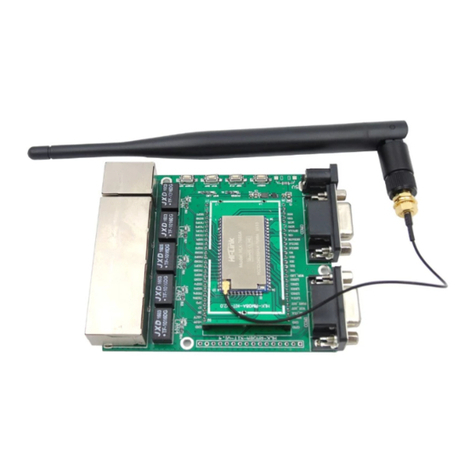
Hi-Link
Hi-Link HLK-7688A User manual
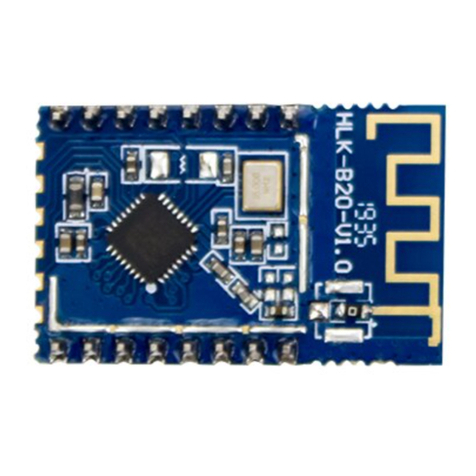
Hi-Link
Hi-Link HLK-B20 User manual

Hi-Link
Hi-Link HLK-7628N User manual
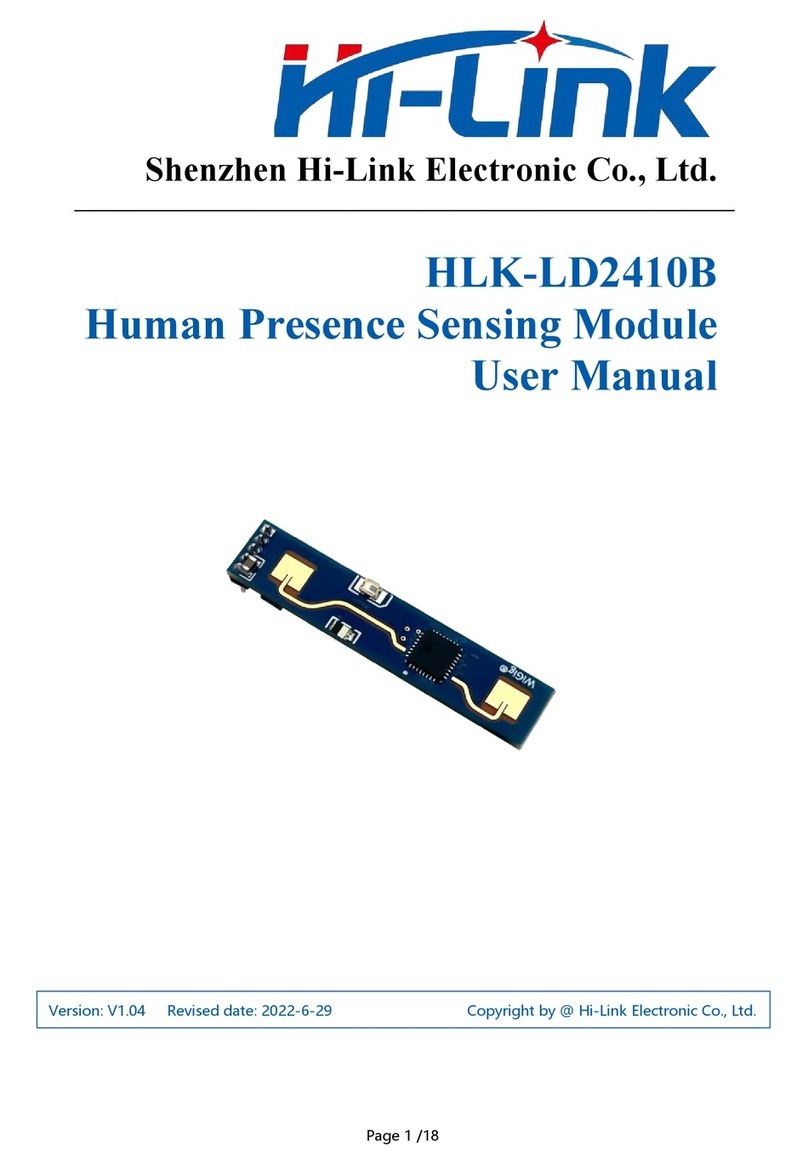
Hi-Link
Hi-Link HLK-LD2410B User manual
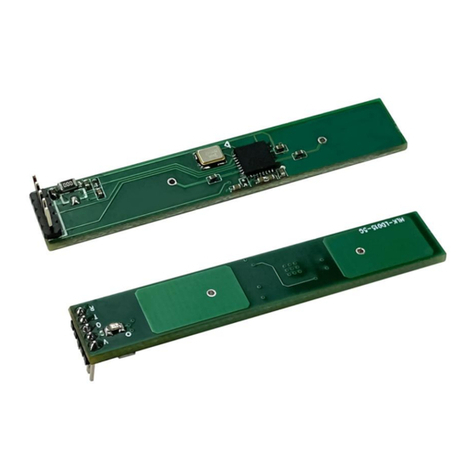
Hi-Link
Hi-Link HLK-LD015-5G User manual
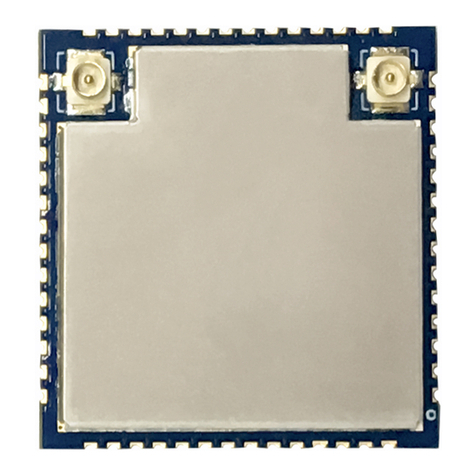
Hi-Link
Hi-Link HLK-7628D User manual
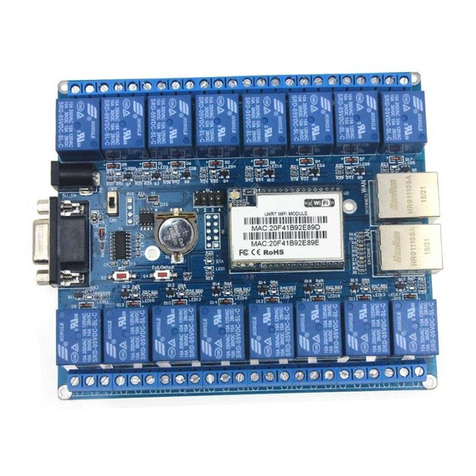
Hi-Link
Hi-Link HLK-SW16 User manual
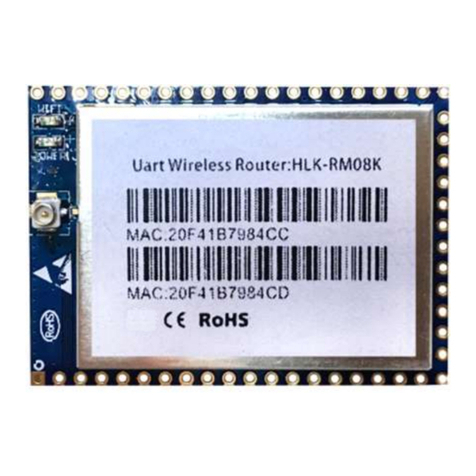
Hi-Link
Hi-Link HLK-RM08K User manual
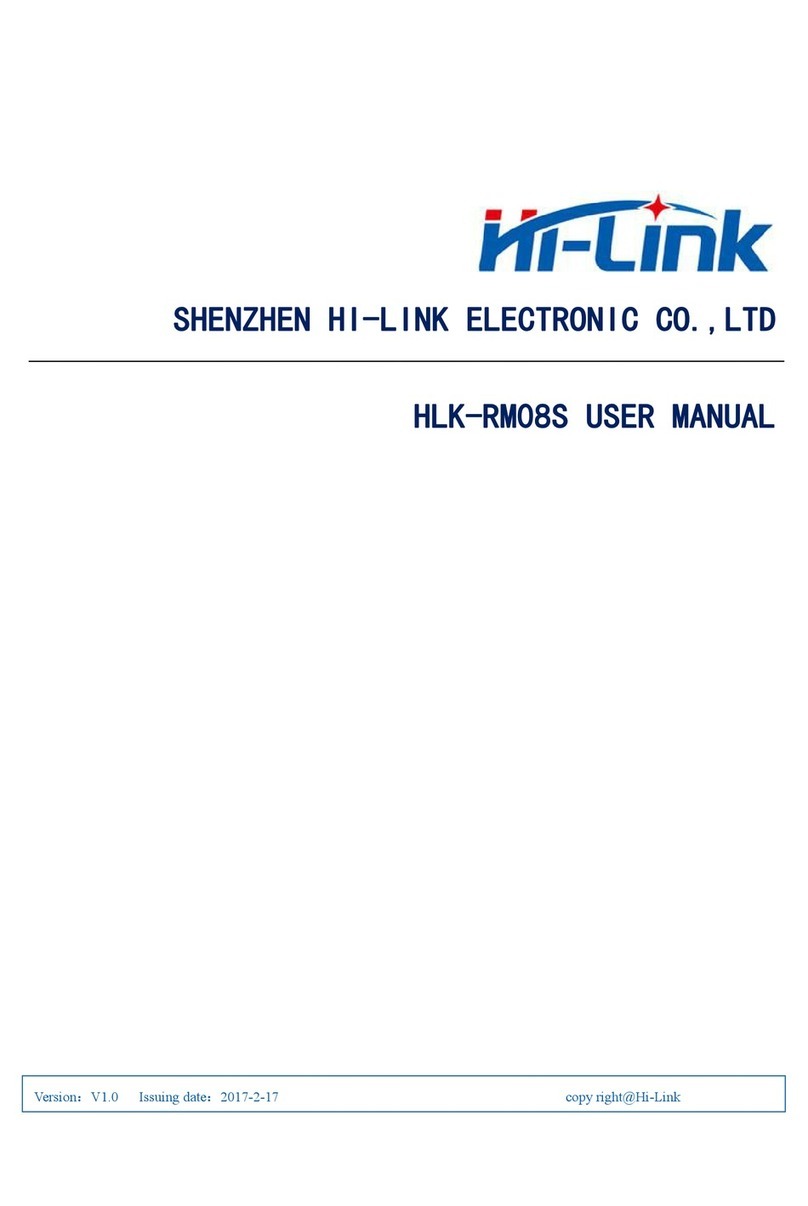
Hi-Link
Hi-Link HLK-RM08S User manual
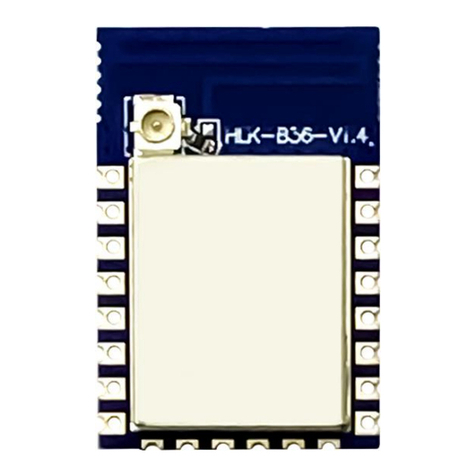
Hi-Link
Hi-Link HLK-B36 User manual

